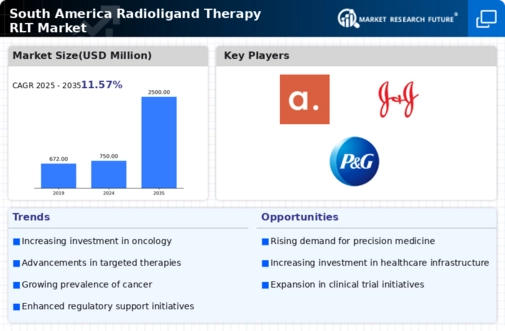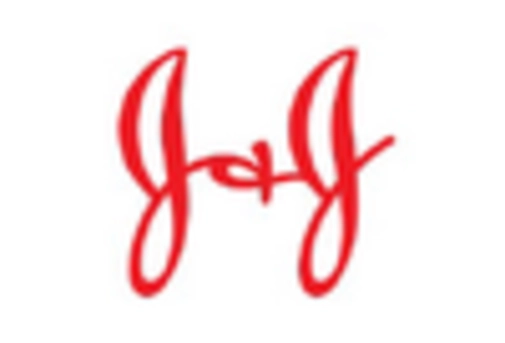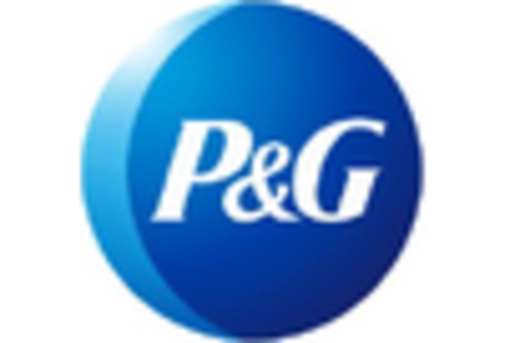Increasing Cancer Incidence
The rising incidence of cancer across South America is a primary driver for the Global South America Radioligand Therapy Market RLT Market Industry. As cancer cases continue to escalate, the demand for innovative treatment options like radioligand therapy is expected to grow. For instance, the World Health Organization reports that cancer is one of the leading causes of death in the region, prompting healthcare systems to seek effective therapies. This trend is reflected in the projected market value of 750 USD Million in 2024, indicating a robust response to the urgent need for advanced cancer treatments.
Growing Awareness and Acceptance
The growing awareness and acceptance of radioligand therapy among healthcare professionals and patients are driving the Global South America Radioligand Therapy Market RLT Market Industry. Educational campaigns and professional training programs are increasing knowledge about the benefits of RLT, leading to higher adoption rates. As patients become more informed about their treatment options, they are more likely to seek out advanced therapies. This shift in perception is expected to contribute to the market's growth trajectory, with a projected value of 750 USD Million in 2024, reflecting a positive trend in patient engagement and treatment choices.
Technological Advancements in RLT
Technological innovations in radioligand therapy are significantly influencing the Global South America Radioligand Therapy Market RLT Market Industry. Advances in imaging techniques and radiopharmaceutical development enhance the precision and effectiveness of treatments. For example, the introduction of novel radioligands that target specific cancer cells improves therapeutic outcomes. These advancements are likely to contribute to the market's growth, with expectations of reaching 2500 USD Million by 2035. The integration of cutting-edge technology not only enhances treatment efficacy but also attracts investment in the sector, fostering further innovation.
Government Initiatives and Funding
Government initiatives aimed at improving cancer care are pivotal for the Global South America Radioligand Therapy Market RLT Market Industry. Various South American governments are increasing funding for cancer research and treatment, recognizing the need for effective therapies. For instance, national health policies are being revised to include radioligand therapy as a standard treatment option. This support is likely to stimulate market growth, as evidenced by the anticipated compound annual growth rate of 11.57% from 2025 to 2035. Such initiatives not only enhance access to treatment but also encourage collaboration between public and private sectors.
Collaboration Between Industry and Academia
Collaboration between industry stakeholders and academic institutions is fostering innovation in the Global South America Radioligand Therapy Market RLT Market Industry. Partnerships are being formed to conduct research and clinical trials, accelerating the development of new radioligand therapies. These collaborations not only enhance the scientific understanding of RLT but also facilitate the translation of research findings into clinical practice. As a result, the market is poised for significant growth, with projections indicating a value of 2500 USD Million by 2035. Such synergies are crucial for advancing treatment options and improving patient outcomes.














Leave a Comment